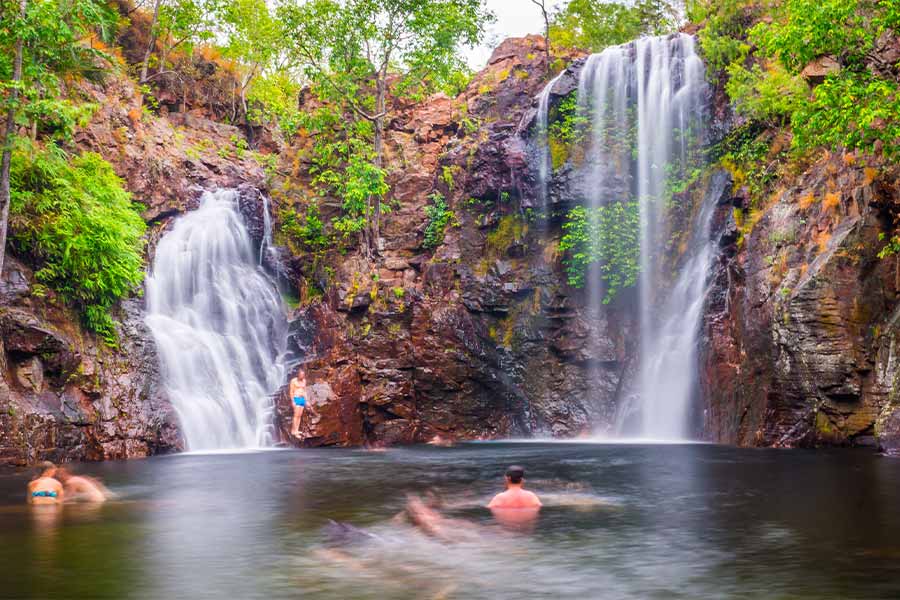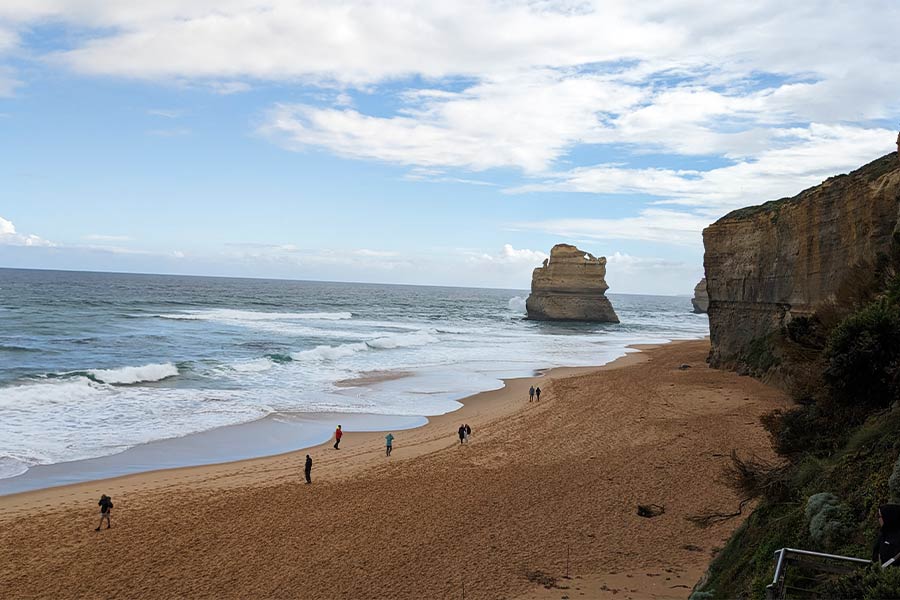It was the allure of the outdoors and native Australian legends that took me to a city that was named after one of the world’s most famous naturalists – Charles Darwin – best known for his Theory of Evolution. Darwin, the capital of Australia’s Northern Territory, has evolved from being a sleepy outpost to a quaint city with its own distinct vibe. With just about quarter of a million people (probably the same population as a busy neighbourhood in one of India’s metros) spread over an area almost 40% the size of India, Australia’s Northern Territory is one of the world’s most desolate zones.
Darwin sits on the northern end (Aussies like to call it the ‘Top End’), the tropical tip of this vast state. It was the perfect launchpad to explore the state’s never-ending highways, gushing waterfalls, fierce creatures and an enchanting slice of native Australian legends. You have to keep stepping out of your comfort zone though.
Lonely at the top
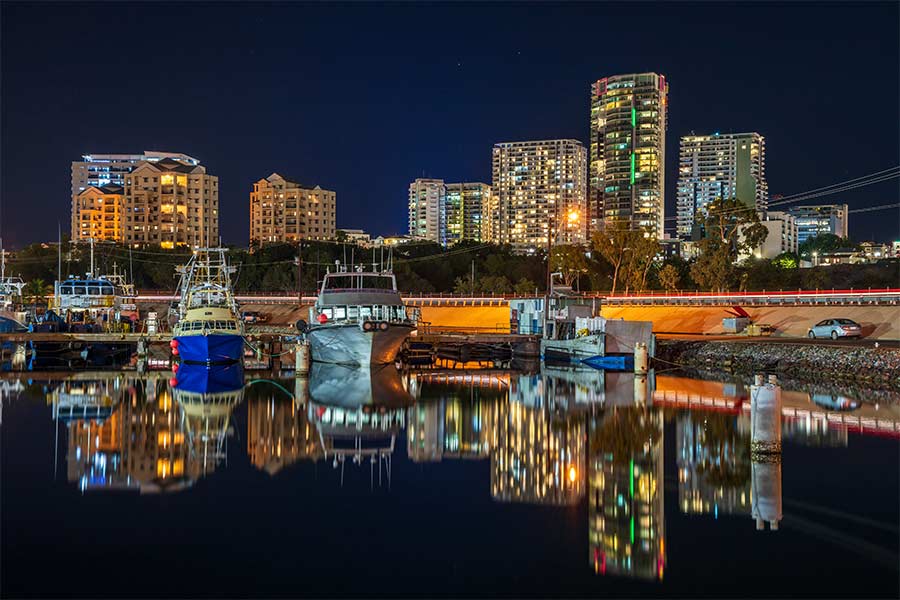
Boats moored at night in Darwin’s Frances Bay Shutterstock
Darwin is almost equidistant from Singapore and Melbourne, one visit to the city’s wharf precinct and the Asian connection becomes more obvious. The area is home to rows of eateries that keep dishing out fiery Southeast Asian fare with fresh catch of the day. It’s not just the culinary delights that make this Darwin’s magnet; the area is steeped in history. In the 1880s, Frances Bay was the centre of Darwin’s thriving pearling industry. The area was constantly bombed by Japanese fighter planes in the 1940s during the height of the Second World War – a small memorial along the wharf pays tribute. The wharf walk is a great place to catch sunsets and marvel at the size of the large cruise liners that keep dropping by.
G’day mate!
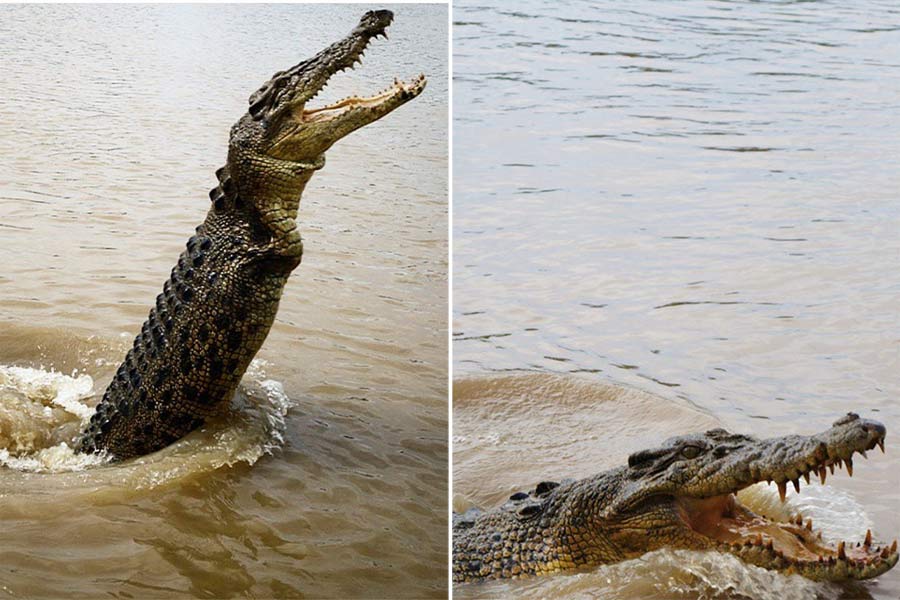
The Adelaide River is home to the ‘Salty’ (Australian for saltwater crocodile), which has been at the top of the food chain in these parts for thousands of years Ashwin Rajagopalan
It’s been over three decades since one of Australia’s most successful films hit the screens, but the Crocodile Dundee legend lives on. The Adelaide River (it’s a long distance from Adelaide though) region is just two hours from Darwin and was one of the stunning locations used for the film. It’s also home to the ‘Salty’ (Australian for saltwater crocodile) that has been at the top of the food chain in these parts for thousands of years. Nobody takes these salties lightly in NT – they can grow as long as 15 feet and weigh close to 500kgs. There are multiple cruise operators that wind around the Adelaide River; and get you within a safe distance of these formidable reptiles. The waters appear remarkably calm for the first few minutes but eventually the Salties make a play for the large chunks of meat that the cruise operators use as bait. That’s when the enormity of this reptile hit me.
Termite territory, too

Some areas of Litchfield National Park are home to rows of magnetic termite mounds that are about two metres tall and are reminiscent of tomb stones Ashwin Rajagopalan
You don’t have to drive too long from Darwin (about 100 km away) to arrive at one of Northern Territory’s many national parks. Spread over 1,500sq km, the park is a brilliant blend of waterbodies, thundering waterfalls, 4WD tracks (that can keep changing depending on the wet weather) and the unique magnetic termite mounds, which are the showstopper. Termites might wreak havoc in attics and cupboards the world over, but it’s a slightly different story in the northern end of Litchfield. Some areas of the park are home to rows of magnetic termite mounds that are about two metres tall and are reminiscent of tomb stones. Each of these mounds is an architectural marvel with arches, tunnels and insulation usually aligned north to south thereby ensuring minimum exposure to the sun. Also in Litchfield are taller Cathedral Mounds that have survived decades and can be as high as four metres. Florence Falls – you can spot this even before you descend down an awkward downhill path, and the Buley Rock hole another calming private Jacuzzi-type water body, are two must-stops within Litchfield.
One of the world’s longest-living cultural landscapes
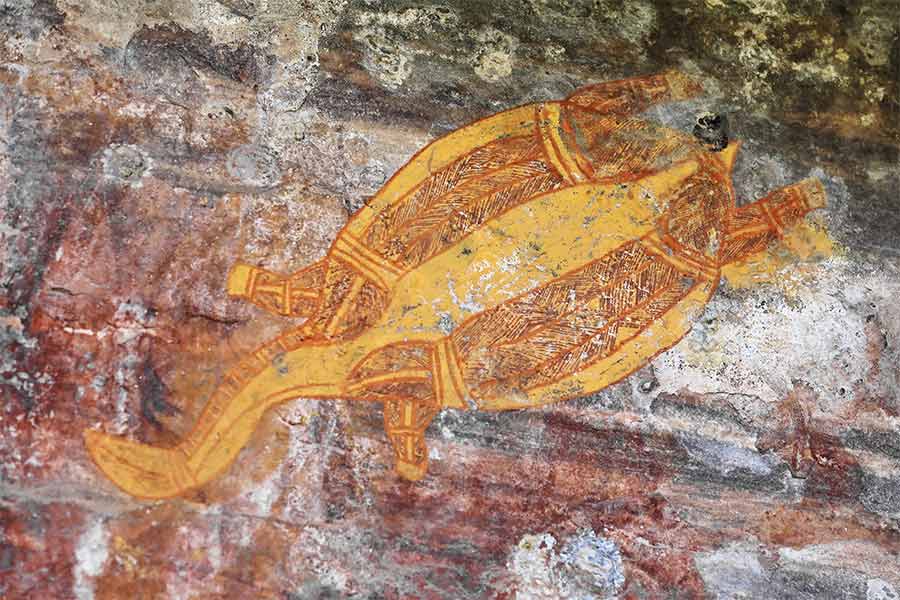
An almangiyi, or long neck turtle, painted with colours made of ochre, clay mineral and pigments mixed with blood and fat, at a rock in Kakadu National Park Shutterstock
Fifty thousand years is a long time by any yardstick. The Bininj Mungguy have lived in Kakadu National Park for over 50,000 years. Kakadu is now a UNESCO World Heritage Site and the ownership of the park reverted to the Bininj Mungguy, the traditional owners of this area. Spread over a staggering area of 20,000sq kms (About the same size as Israel), Kakadu boasts of seven regions with distinct flora and has six seasons from the wet Gudjewg season to the hot and dry Gurrung season. There are discoveries waiting to be made at almost every corner, like marshy swamplands full of lotus blooms (believed to have brought through trading routes from Asia hundreds of years ago) but nothing quite compares to Ubirr.
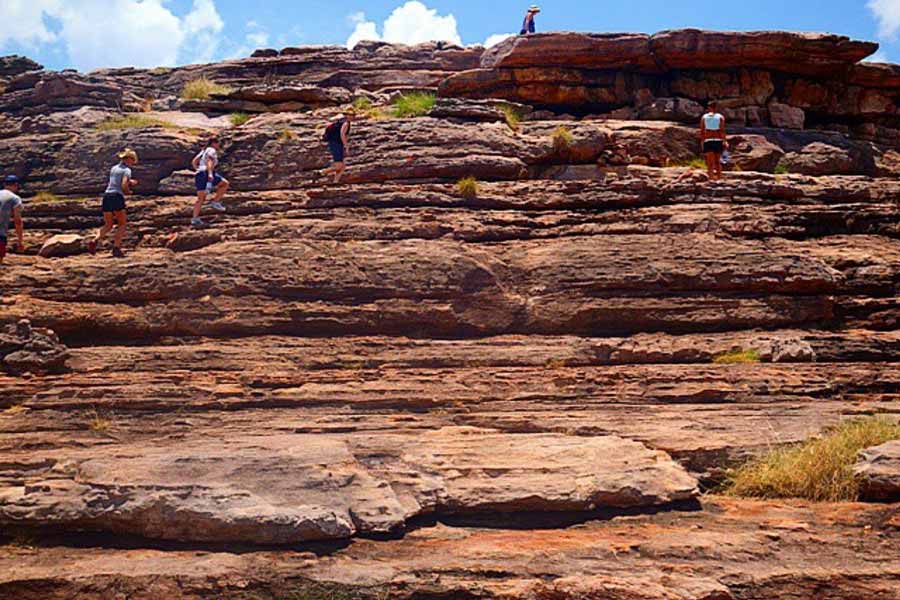
On the Ubirr trek… Ashwin Rajagopalan
The Ubirr Rock area has Aboriginal paintings that can be traced back 20,000 years. Don’t expect the traditional dotted Aboriginal style art here though; these paintings precede more modern Aboriginal art forms. The park is also full of treks and trails like the tough trail that leads you to the Nawaruladnja lookout offering spectacular vistas of Kakadu. It here that I came to terms with the sheer scale of the outdoors in one of the world’s most untamed regions.
